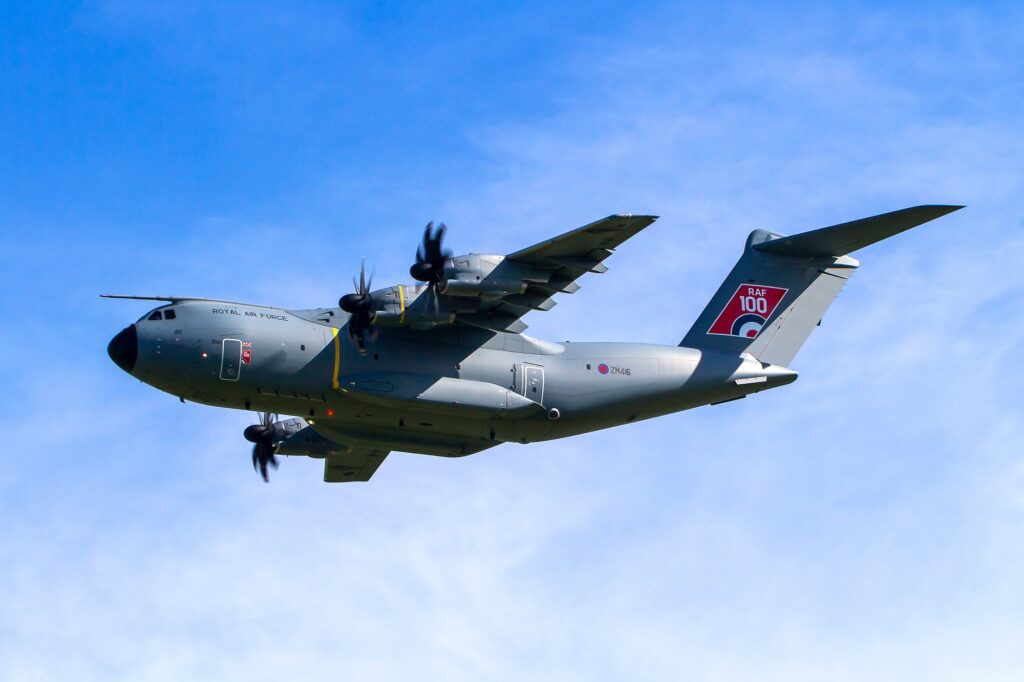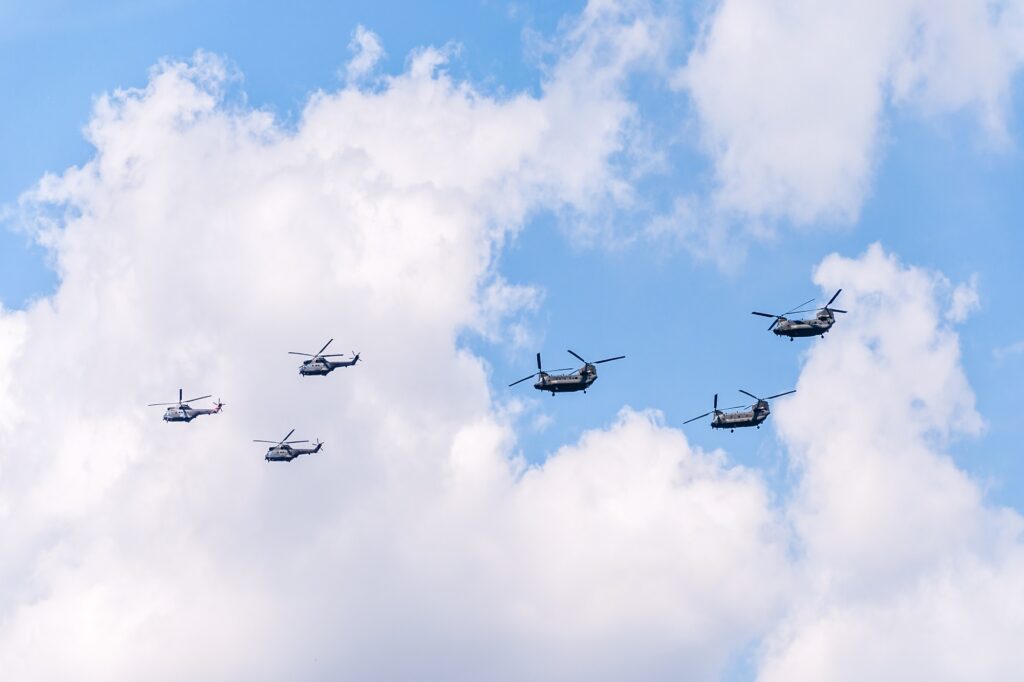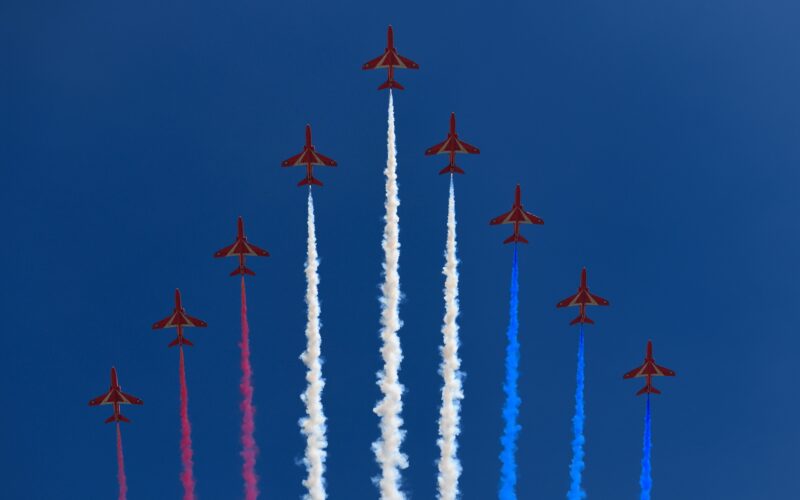[Ed. note: At the end, due to the weather conditions, with rain and low clouds over Central London, the much-awaited Coronation flypast could only take place in a scaled-down form. In this earlier piece we published in the morning of May 6, 2023, you can get an idea of what it may have been like had the weather been a bit nicer].
In the UK on Saturday, May 6, 2023, King Charles III will officially be crowned in front of roaring crowds and millions of people around the world watching in their homes.
At 10:20am (UK time) the King and the Queen Consort will make their way by the Diamond Jubilee Coach from Buckingham Palace to Westminster Abbey in London.
After a Coronation service lasting almost an hour at 12:01pm a six-gun salvo fired on Horse Guards Parade will signal the new King has been crowned.
It is sure to be a huge, historic moment for celebration for those gathered in London and across towns and cities up and down the United Kingdom.
One of the highlights of the day will be a spectacular Flypast by 68 aircraft when the newly-crowned King returns to Buckingham Palace and steps out onto the balcony with the Royal Family.
The aircraft taking part in the Flypast could not be more varied, with planes and helicopters from the past and present set to soar above London.
Coronation Flypast

The 68 aircraft will be divided into 14 waves, drawn from across the Royal Navy, British Army and Royal Air Force.
The aircraft will take off from Royal Navy, British Army and Royal Air Force air stations around the United Kingdom, joining holding patterns around the south-east of England before coming together in formation for the flypast.
Slower aircraft will be placed at the front of the formation, with faster aircraft at the rear.
The formation starts out with wide spacing between the aircraft and ends with them all correctly spaced for the flypast over the Palace. Careful time, speed and distance calculations, plus much skill, will be used to perfect this.
When will the Flypast start?
The first aircraft will reach Buckingham Palace at 14:30pm and the flypast will last for approximately six minutes.
The aircraft will fly directly down the length of The Mall and then over Buckingham Palace.
Which aircraft will be in the Flypast?

Wave One
3x Juno HT1 helicopters
Wave Two
1x Wildcat helicopter
2x Merlin Mark 2 helicopters
Wave Three
1x Wildcat helicopter Mark 1
2x Apache helicopters
Wave Four
1x Wildcat helicopter Mark 1
2x Merlin Mark 4 helicopters
Wave Five
3x Chinook helicopters
1x Puma HC2 helicopter
Wave Six
1x Lancaster from the Battle of Britain Memorial Flight
2x Spitfire from the Battle of Britain Memorial Flight
2x Hurricane from the Battle of Britain Memorial Flight
Wave Seven
1x Phenom T1
4x Texan T1
Wave Eight
1x A400M Atlas
2x C-130J Hercules
Wave Nine
1x C-17 Globemaster
Wave Ten
1x Voyager
1x A400M Atlas
Wave Eleven
1x Poseidon MRA1
1x RC-135W Rivet Joint
Wave Twelve
6x F-35B Lightning
Wave Thirteen
18x RAF Typhoon FGR4
Wave Fourteen
1x Envoy IV CC1
9x Hawk – The Royal Air Force Aerobatics Team (The Red Arrows)
The Flypast Mission Commander, Wing Commander Noel Rees, will be onboard the Poseidon MRA1 flown by Wing Commander Adam Smolak.
Wing Commander Rees said: “It is an honour to be involved in delivering an airborne spectacle worthy of His Majesty the King’s Coronation.”
The aviator leading the formation, in a Juno HT1 helicopter, will be Flight Lieutenant Tom Knapp of 60 Squadron, 1 Flying Training School, who has served in the Royal Air Force for 18 years.
Other notable personnel taking part in the flypast are Wing Commander Kevin Terrett, leading the Lossiemouth element of the flypast formation, who has recently undertaken combat air patrols over Europe defending NATO airspace following the Russian invasion of Ukraine.
Leading the Red Arrows in the final wave of the flypast is Squadron Leader Tom Bould, responsible for all aspects of the iconic Red Arrows display, from running the training programme to choreographing the show.
The oldest aircraft in the flypast is Spitfire Mk IIa P7350, whilst the newest is the Envoy IV CC1, which entered RAF service last year.

